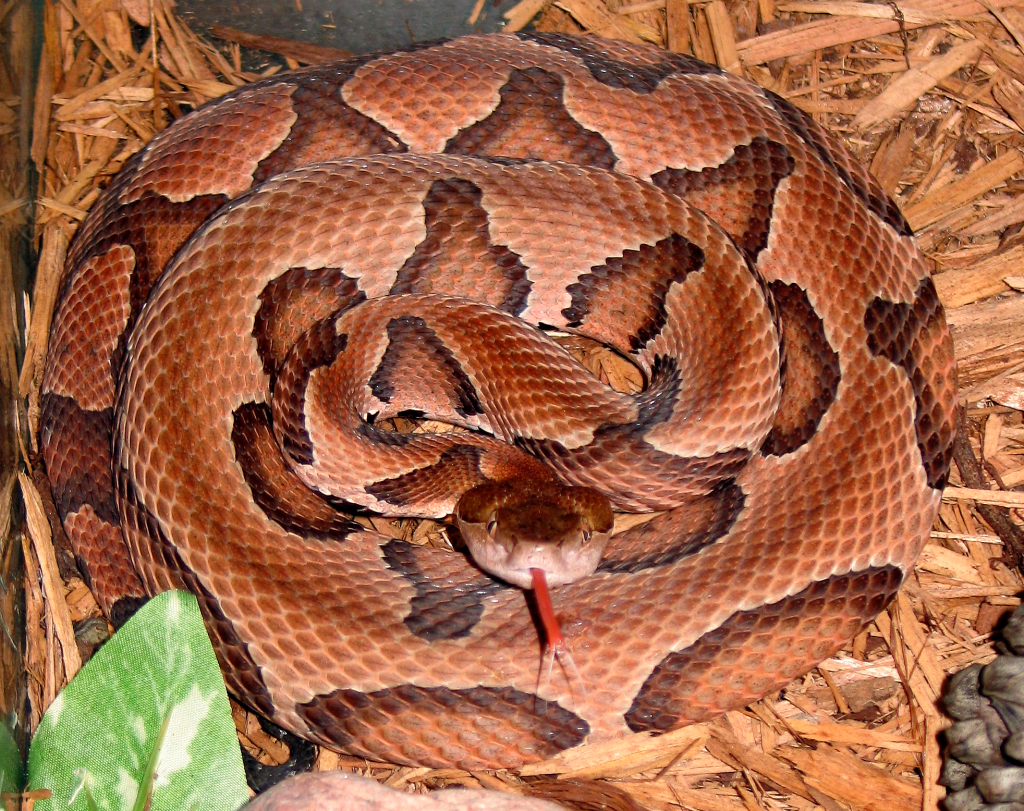My partner and I were taking a walk through the park after work. The sun was still high in the sky — we had a few hours before sunset — and left bright, warm patches on the path. There was a brisk, chilly breeze that made me thankful for the mask over my mouth and nose. Everything looked like it’d been put through some kind of image filter: impossibly green and saturated blue, reflected in the million tiny ripples and waves in the creek.
It was really nice.
Unfortunately, the way back was less so. Right off the side of the path we saw a snake, flopped over on its back, sides pierced and streaked with blood. It was a recent kill — the body was still in one piece, and it hadn’t even attracted insects yet. Nearby, we could see some broken sticks, likewise spotted with blood.


As much as this scene absolutely infuriated me, I can understand the desire to get venomous snakes away from places where people — especially children — often go. I do. The thing is, if a person takes it upon themselves to kill a snake, they also bear the responsibility of being able to identify that snake. If it isn’t venomous, it’s better to leave it alone and teach children to do the same.
Nature makes it surprisingly easy to identify dangerous things. Some harmless snakes (and caterpillars!) take advantage of this by disguising themselves — compare milk snakes and coral snakes, for example. Even better, this area only has two native venomous snake species.
One is the copperhead (Agkistrodon contortrix). It’s easy to identify because it has the typical heart-shaped, chubby-cheeked head of a venomous snake, a coppery head, and markings shaped like Hershey’s kisses.

The other is the timber rattlesnake (Crotalus horridus). This species has dark crossbands or chevron-like markings that overlay another color, and a dorsal stripe. Their base colors can be light or dark, and the variability in their coloration can make them tricky to identify. They do have rattles, which fortunately tend to clear things up quickly.
Most snakes don’t want to mess with people, because we’re too large to eat, we’re dangerous, and we’re an enormous waste of energy. They’ll put up an aggressive display, but this is always to get people to go away. The problem with copperheads is that they’re ambush predators that do a pretty good job of blending in. They tend to freeze when faced with a threat, relying on their natural camouflage to protect them. This means they often get stepped on, and may try to bite in self-defense.
(Roughly 4 out of 5 venomous snake bites are “dry bites,” meaning that no venom is injected.)
If you see a copperhead or timber rattlesnake, the safest thing you can do is give it a wide berth. It doesn’t want to attack you, it just doesn’t want to get stepped on.
The snake we saw was neither of those. Based on its coloration, markings, absence of a rattle, and the shape of its head, it was an eastern ratsnake. Not only is this species not venomous, it’s beneficial. As its name implies, its diet primarily consists of small rodents — meaning that it keeps rat populations in check. I love rats and think they make fabulous, intelligent, affectionate pets, but I also know that they’re less than welcome in cities. (If you’re in an urban or suburban area and don’t live in a rat-infested building, thank a ratsnake. Seriously.)
Ratsnakes and other black snakes are often confused for water moccasins, which is likely what caused this snake’s untimely death. There’s only one problem: Water moccasins don’t live here.
Like most wild animals, even non-venomous snakes can act aggressively if they feel threatened. The solution is to leave them alone. They don’t want to expend the effort to chase down and attack something they can’t eat, because that’s energy that they don’t get back. Reptiles can’t carry rabies, either. Some people may experience an allergic reaction to proteins in snake saliva, or develop an infection if the wound isn’t cleaned promptly, the same as a bite from any other animal.
For hikers that spend a lot of time in areas populated by snakes, I recommend learning to use a snake hook. Foldable or collapsible snake hooks are the most portable, and therefore likely the best option for people on a trail. While they aren’t as sturdy as solid snake hooks, the foldable snake hook you have with you beats the solid snake hook you left behind for being too cumbersome. If you can get a solid walking stick that doubles as a snake hook, even better!
In the event of a bite from a venomous snake, there is no substitute for the ER. Never attempt to suck venom out by mouth. Some places sell “venom extraction kits” that purport to safely remove snake venom, but these don’t actually work the way they claim to. In many cases, they just cause bruising and other tissue damage without removing venom, which may make the situation worse and complicate the healing process. There’s even some evidence to suggest that they may make more venom stay in the body by preventing it from oozing out of the wound.
The majority of snakes aren’t just harmless, they’re beneficial. They keep fast-breeding rodent populations in check, which likewise keeps rodent-borne diseases down. Before going into places where snakes live, familiarize yourself with their patterns, behavior, and habitat.
As for people who can’t see a snake without wanting to kill it? Stay home.


